Despite Ecuador’s small size, the South American country is positively packed with little-known hiking trails.
With volcanoes, mountains, forests and coasts, Ecuador offers hikers a rich and diverse hiking experience. No matter where you go in this country, you’re sure to be close to several stunning trails.
So if you’re planning a hiking trip to Ecuador (which we highly recommend you do), make sure to check out some of its best hikes listed below!
7 Best Hiking Trails In Ecuador
1. Quilotoa Lake
The Quilotoa Lake is a hidden gem in Ecuador where hikers can enjoy a quiet and peaceful journey up to the rim of the crater and bask in the breathtaking view of the lagoon below.
The beauty of this hiking trail is that hikers of all levels can experience it. There are several route options to choose from depending on how tough a trek you’re looking for.
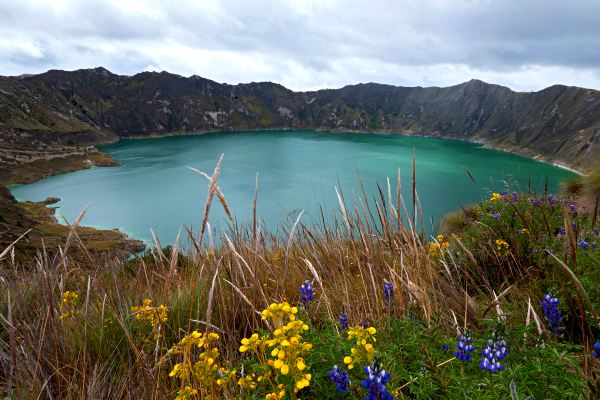
The shortest trail takes only about an hour. It starts from the Quilotoa parking lot and leads to the Quilotoa Shalalá Overlook. This trail is perfect for beginner hikers who want to enjoy the spectacular view without too much effort.
The longest route is the Quilotoa Loop, which takes between 3 to 5 days to trek. This trail truly showcases the small villages and beautiful scenery of Ecuador. You can also hike around the crater which will take about 5 hours.
2. Rucu Pichincha
This trail takes you up the Rucu Pichincha stratovolcano and can be done in a single day. Despite being so close to Quito (Ecuador’s capital city), the trek is very quiet and uncrowded so you can enjoy a peaceful, solitary trek to the top.
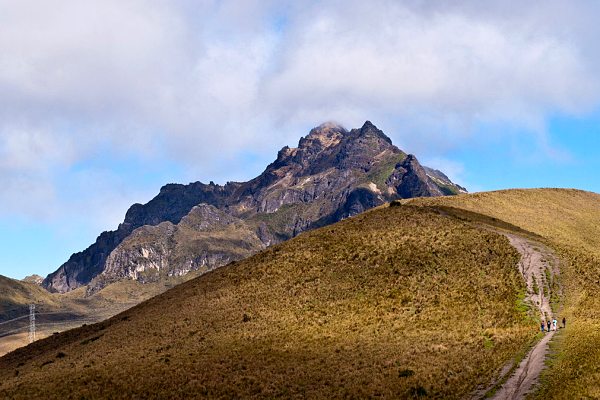
Photo by Timwryan
A quick cable car journey lands you right at the trailhead at 3945 meters. The trail to the summit is 10 kilometers and is fairly easy so hikers of all levels can enjoy it. However, there is quite a steep section which will require some scrambling, so be prepared!
The summit sits at 4698 meters and offers a stunning panoramic view of Quito below.
Please note
While the Rucu Pichincha trail is easy to get to, it’s a very difficult trail to follow as its sign posts are not always clear. Make sure you hike with someone who has done the route before and knows the way so that you don’t get lost. It is also very important to take your time to acclimatize as the summit lies at a high altitude.
3. Cajas National Park
The Cajas National Park is situated in the Azuay province, close to Cuenca, and has around 20 different hiking trails to explore. The land is rugged and wild - offering stunning views and picturesque scenery throughout the park. It also lies at quite a high altitude, with elevations ranging from 3100 and 4450 meters within the park.
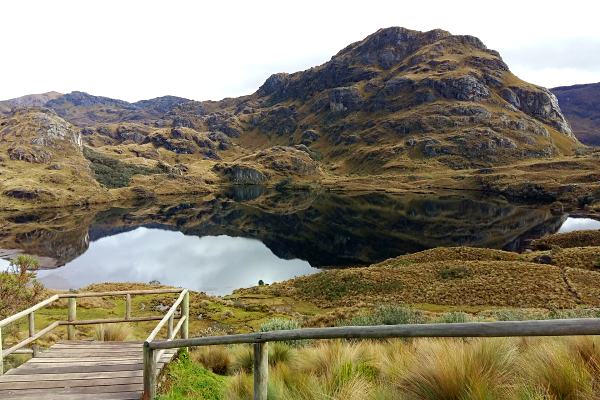
There are over 200 lakes nestled within the grassland and rocky terrain, making for some of the most unique scenery you’ll ever see. You can also find rocks dating back to the Pleistocene and Cretaceous period in this UNESCO Biosphere Reserve.
Because the park is so big and has so many trails, there are routes suitable for all levels of hikers. From short day hikes to multi-day treks, Cajas National Park has it all. We recommend hiking with a guide or planning your route in advance because the park is so enormous that it’s very easy to get lost.
4. Cotopaxi National Park
The Cotopaxi Volcano is Ecuador’s second highest peak with its highest point reaching 5897 meters. It is also one of the highest active volcanoes in the world and is a popular challenge for mountain climbers.
At its summit, you are rewarded with a unique view of the volcanic crater as well as a glorious panorama of the surrounding Andean Mountains.
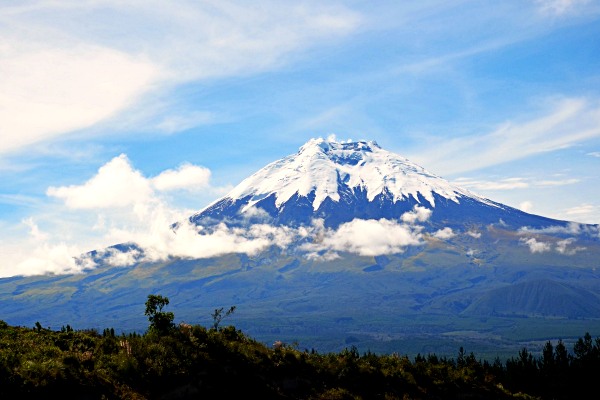
The Cotopaxi climb requires altitude training and you must be in good health and fitness. However, you can still hike up to the first shelter if you’re just looking for a good hiking trail on the volcano. There are also multiple trails to explore within the national park with stunning views of Cotopaxi towering over the land.
You may also like: Climbing Chimborazo
5. Inca Trail to the Ingapirca Ruins
The Inca Trail is one of the most notable treks in Ecuador and leads to the Ingapirca Ruins. Similar to the famous Inca Trail to Machu Picchu in Peru, this trail is about 40 kilometers along and takes between 3 and 5 days to trek. The trail follows some of the old Inca roads, which showcase the beautiful natural surroundings of the area.
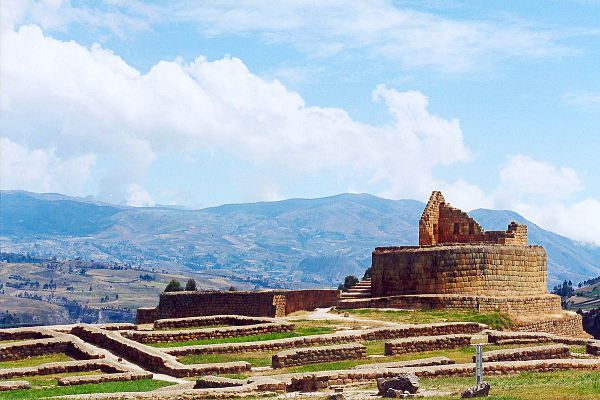
Photo by Delphine Ménard
Along this trail, you’ll see Inca rest houses and ruins, spectacular lagoons, forests, snow-capped mountain peaks, and Ingapirca itself in all its splendor. The highest peak of the trek is about 4200 meters above sea level.
If you’re planning on hiking the Inca Trail to Ingapirca by yourself without a guide, make sure you take a map and plan your route in advance.
It is also very important that you take the time to acclimatize properly before heading out on your expedition. The land is quite high above sea level so spend a couple days in Quito or Cuenca first to give your body time to adapt.
6. Lake Cuicocha
Lake Cuicocha translates to ‘Guinea Pig Lake’ and it’s not difficult to see how this lake got its distinctive name. There are two islands in the center of this lake, the biggest of which resembles the shape of a guinea pig.
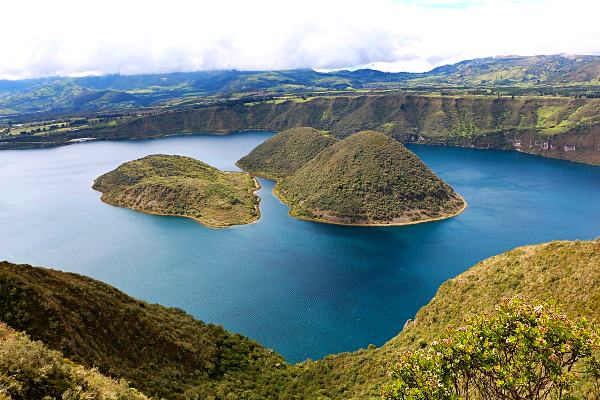
Photo by Bernard Gagnon
The hike to Lake Cuicocha is ideal for a day hike and takes about 4-5 hours. Once you reach the lake, you can rent a kayak if you want to paddle to the guinea pig islands for more exploration.
The lake lies in a crater that was created about 3100 years ago and is a truly beautiful sight to see.
7. Yasuní National Park
Yasuní National Park is the perfect place to explore if you want to experience hiking through the Amazon rain forest. While it takes some effort to get to, this park offers a spectacular and unique hiking experience.
The area is so diverse and rich in wildlife that you’re bound to see all sorts of wonderful sights and interesting animals. Keep an eye out for monkeys, colorful birds, harpy eagles, anacondas and tarantulas.

Photo by Alan & Flora Botting
Yasuní National Park is carefully monitored in order to protect the land so there are many guided hiking opportunities.
One of the best hikes in the park is the Mirador trail. This hike takes you up to the highest point in Yasuní National Park where you’ll be able to enjoy a glorious view of the lush rain forest blanketing the land.
Best Time To Go Hiking In Ecuador
Because of its proximity to the equator, you can go hiking in Ecuador all year round. The lowlands are generally quite warm while the mountains and highland regions are much colder. Temperatures can drop below freezing on the mountains. So if you’re planning on climbing, make sure you pack warm clothes and base layers.
Instead of having four distinct seasons, the country’s climate is divided into a wet season and a dry season. It is better to go hiking in the highlands during the dry season, which runs from June to September. This is the best time because you won’t have to worry about it raining too much or delayed hiking expeditions due to bad weather.
The weather can vary greatly between the different regions and mountain micro-climates in Ecuador so it is always a good idea to be prepared for all weather. Make sure you pack a rain jacket just in case you get caught in a surprise rain shower.
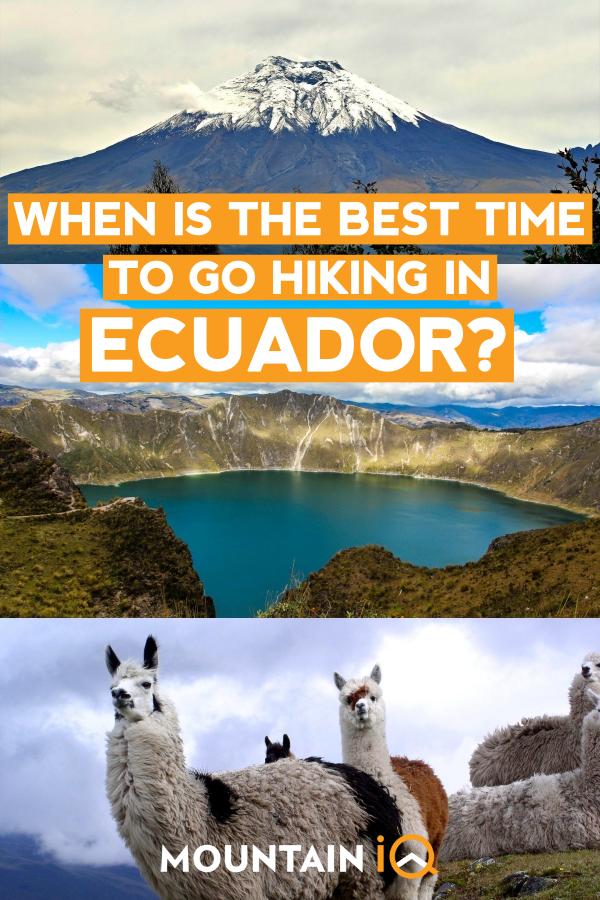

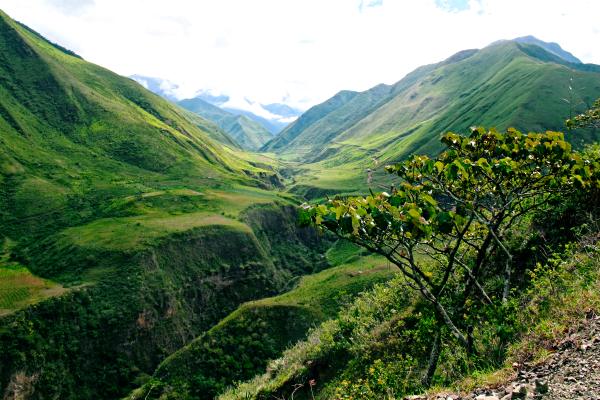
Very helpful information, beautiful views